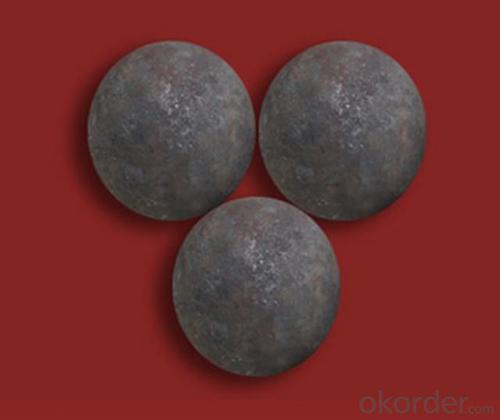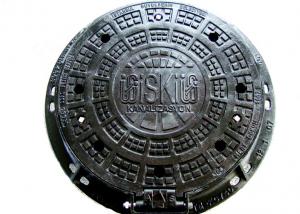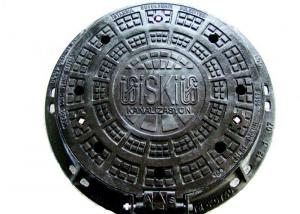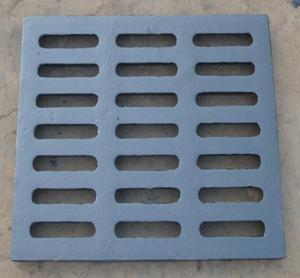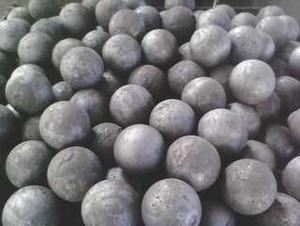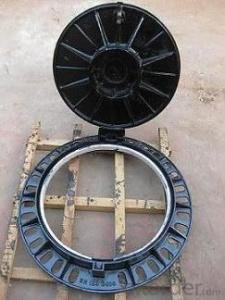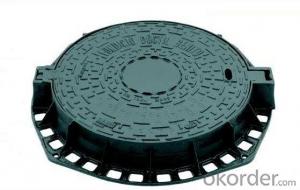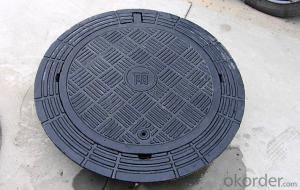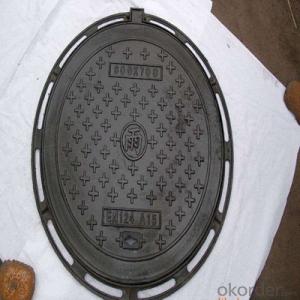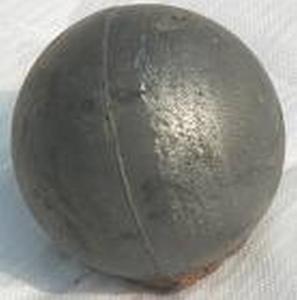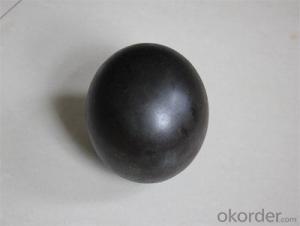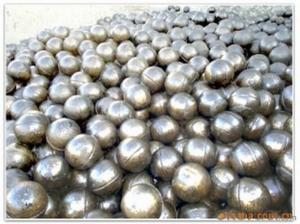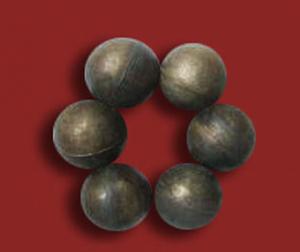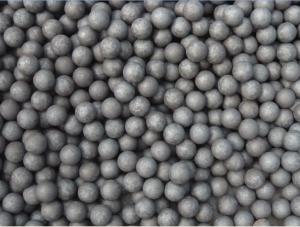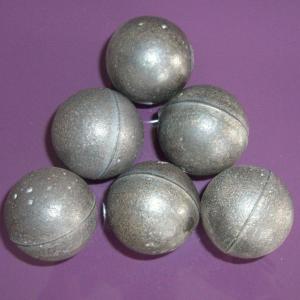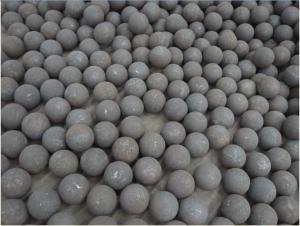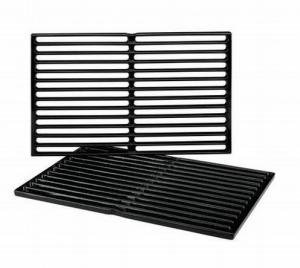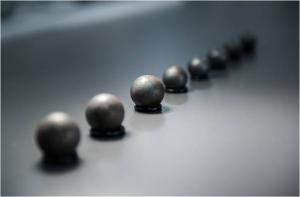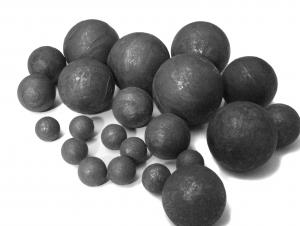Forged Steel Grinding Ball
- Loading Port:
- China Main Port
- Payment Terms:
- TT OR LC
- Min Order Qty:
- -
- Supply Capability:
- 200000M.T./Year /month
OKorder Service Pledge
OKorder Financial Service
You Might Also Like
Specifications of Forged Steel Grinding Ball:
1. Diameter:20mm-150mm(0.75''-6'')
2. Surface Hardness:
Forged ball:58-65HRC
Casted ball:60-65HRC
3. Material:
Forged ball:Steel
Casted ball:Iron
4. Technology:Forged & Casted ,heat treated
5. Unbreakable:0.5 Max.
6. Impact Toughness:>12
7. times of falling ball:5000 min.
8. microstructure:P+C
9. Application: gold & iron mine,steel works,cement plant and power station
10. Certificate: ISO9001:2008
Features of Forged Steel Grinding Ball:
1. High hardness
2. Good wear resistance
3. High toughness
4. No mal-roundness
Features and Advantages of Forged Steel Grinding Balls:
1) High hardness: It has high hardness: surface hardness can reach 55-67 HRC, volume hardness 56-64 HRC
2) High Impact toughness: impact toughness is more than 15 J / cm2.
3) Low Broken rate: peel fragmentation resistance property of over 20000 times. The actual breakage rate is less than 1% and close to 0.
4) Size: Our products range from 20mm to 150mm, 1 inch to 6 inch, and we can also offer all size of products according to clients’ demand.
Packaging of Forged Steel Grinding Ball:
Ton bags (1000Kg Per Bag)
Iron drums (850~920Kg Per Drum)
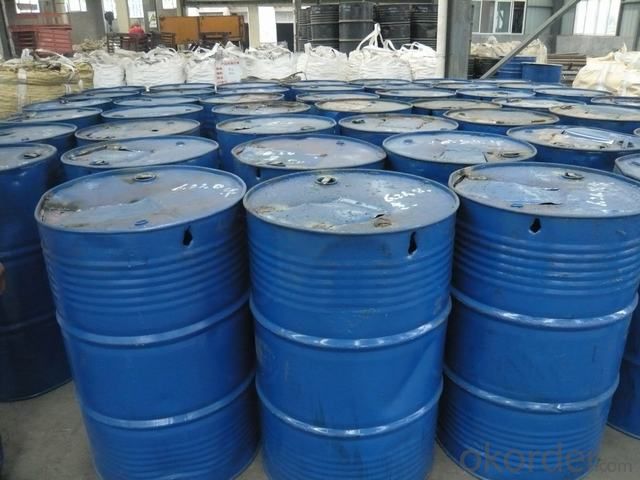

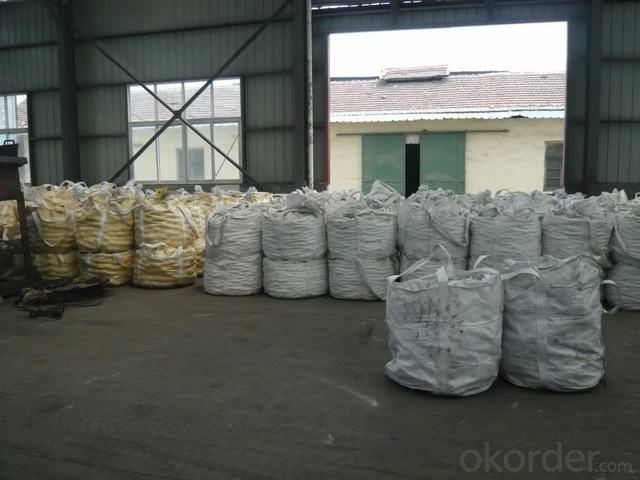
- Q: What are the factors affecting the machining process of the casting material and structure?
- Medium carbon steel begins, and the casting can not be punched and tapped directlyStainless steel, ordinary grade (Fe based alloy element content, less) can not do heat treatment. But processing small holes or tapping to heat treatment (solution. In practice, the annealing treatment can also be). There are a lot of stainless steel matrix is not to say, for example, nickel, cobalt and tungsten. And so on.
- Q: Explain the heat treatment effect of casting parts, forging parts and welding parts
- Good welding of low carbon steel (alloy), probably because the weld workpiece rigidity, fast cooling, the weld internal crystallization of brittle microstructure (martensite), so after welding or welding process welding using self heat, reasonable arrangement of weld, welding seam and heat affected zone heat treatment. The welding heat treatment is often used to preheat before welding, after welding withasbestos cloth covering slow cooling annealing, reach the purpose, its main function is to reduce the internal stress, improve the weld microstructure of martensite formation, reduce brittle tendency, preventing welding cracks.
- Q: What is the difference between forging parts and casting parts?
- Forging is in hot state through the metal hammer or press equipment produced by forging parts. A casting is a metal that is liquid and is poured into a cavity of a specified shape and cooled and solidified. It is the forging metal soft pinch molding, and casting the metal into thin cooling solidification.Forged parts are costly and have long production cycles.
- Q: Selection of hydraulic press is the casting parts and steel plate welding, how to choose?
- Casting parts in one shape, the overall processing in this regard than steel plate welding better. The same price is much more expensive than steel. Large hydraulic presses seldom have casting parts.
- Q: I often see Waixiejiagong drawings, casting, how to distinguish the latheman.
- The technical condition or the material column in the title column will tell whether it is a casting drawing or not. However, the need for casting drawings, and some also through machining (car, milling, etc.), this should be part of the process drawings, process drawings are described
- Q: After reaming, the roughness can reach several levels, that is to say, the sample.Casting parts in rocker arm drilling, reaming, roughness, block. After reaming, the roughness can reach several levels, that is to say, the sample.
- Radial drilling machine can achieve boring, reaming function, but as much as you want, according to your requirements and material to determine!
- Q: For example, casting parts contain many holes, inclusions and other defects, the size and the number of holes exceed which limit is not qualified
- According to different casting process and parts materials, each has relevant standards, can be found online;
- Q: What is the difference between casting and stamping parts?
- The purpose of forming processes is to allow the sheet to undergo plastic deformation without breaking the billet and to make the desired shape and size. In actual production, a variety of processes are often applied to a workpiece. Blanking, bending, shearing, drawing, bulging, spinning and rectification are several main stamping processes. The difference between stamping parts and castings: with thin, uniform, light, strong features, stamping can be produced by other methods difficult to make, with stiffeners, ribs, UPS or flanging of the workpiece, to improve its rigidity. Due to the use of precision molds, the workpiece accuracy up to microns, and repeated high precision, specifications consistent, you can punch out of the hole, lug and so on.
- Q: Would you please tell me how to use casting parts for a year?The cast of an aircraft wing needs to be put aside for a year before it breaks;Does anyone know why?
- 2, heat aging (artificial aging), also known as stress annealing, is to heat the casting to 550-650 degrees, insulation 2 - 4h, with the furnace cooling to 150 - 200T, and then baked.
- Q: In the design of casting steps and precautions, for casting design, we have what experience?.
- (3) to prevent generating white grey cast iron, in addition to taking measures from the process, must make the wall thickness is not too thin (some sources indicate that the corner wall thickness above 15mm, metal type casting must be in the corner, for Aluminum Alloy, magnesium alloy casting casting casting Create fillet should not be less than 3-4m, for casting round cast iron, copper alloy mould casting can see table 1.1-32 selection; (5) because of the metal and the core without let, for the convenience of the casting is taken out and the draw out type, slope casting casting should be suitably large than sand casting metal casting. General 30%-50%, it should be pointed out that in addition to the height of the slope of casting size and alloy type, wall, is also related to the casting surface position, where the cooling and contraction and metal surface of casting surface can be designed from the tendency of small inclination, while casting shrinkage tend to be pressed on the surface of metal castings the type should be given greater inclination, all kinds of metal type alloy casting casting casting.
Send your message to us
Forged Steel Grinding Ball
- Loading Port:
- China Main Port
- Payment Terms:
- TT OR LC
- Min Order Qty:
- -
- Supply Capability:
- 200000M.T./Year /month
OKorder Service Pledge
OKorder Financial Service
Similar products
Hot products
Hot Searches
Related keywords



